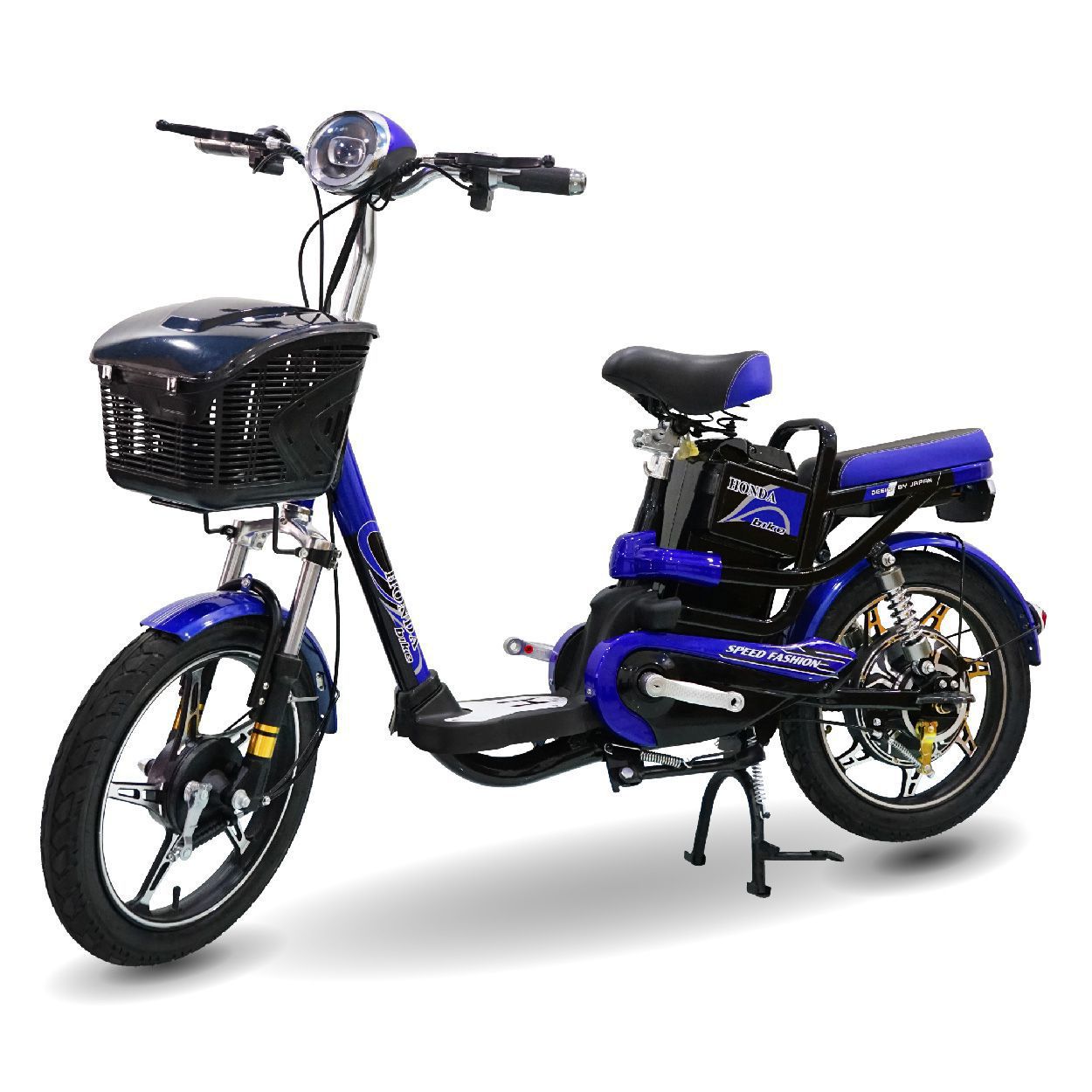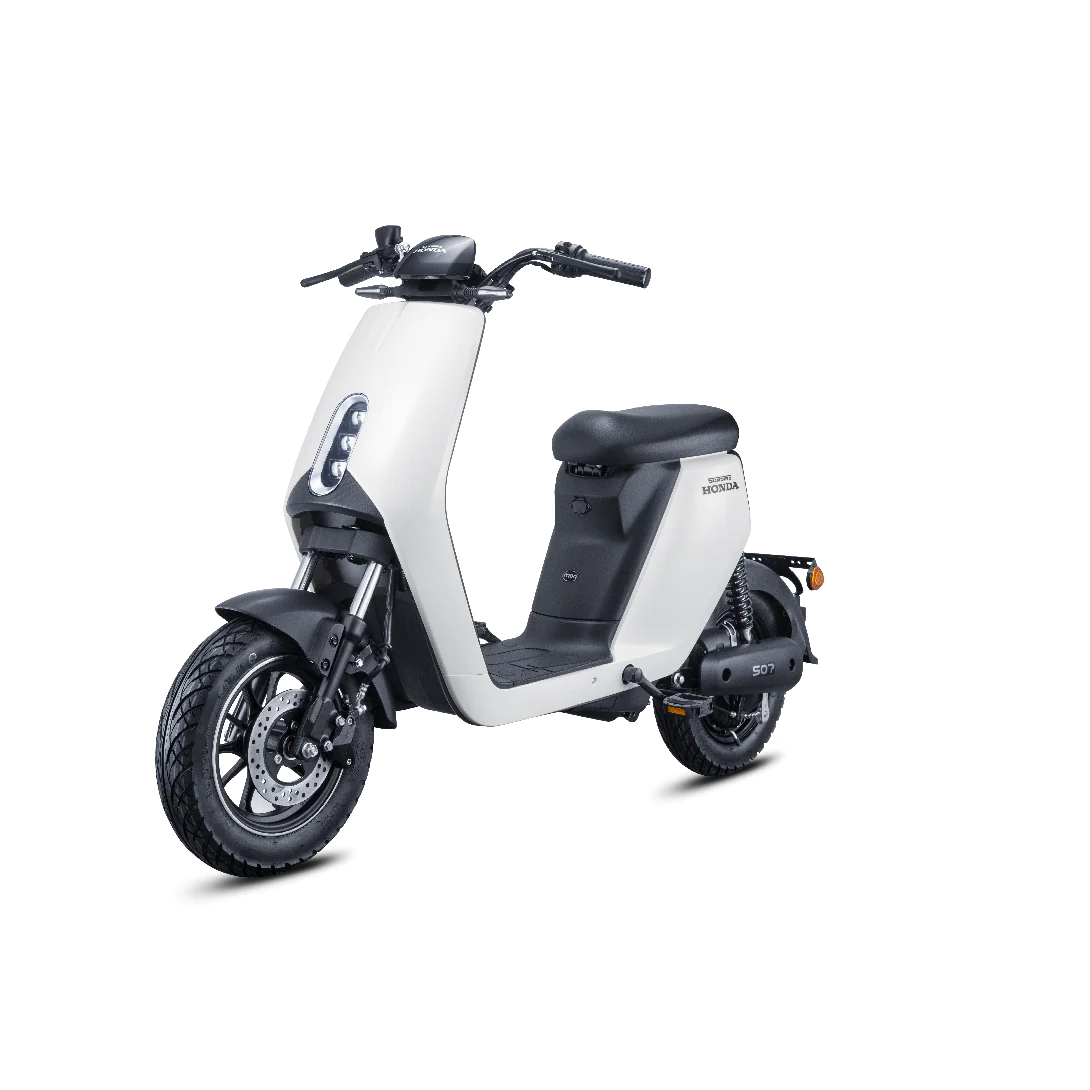Milestone Targets and Sales Goals
Honda has set ambitious goals for its electric motorcycle division. By 2030, they aim to hit 4 million units in global annual sales. This target marks a significant increase of 500,000 units from the previous target of 3.5 million, showing Honda’s commitment to leading in the electric motorcycle market. These sales will not only come from existing markets but also from new ones as Honda pushes for more electric bike adoption worldwide.

This increase in sales target sends a clear signal of Honda’s dedication to electrification. They are not just creating a few models but are aiming for a full range of electric motorcycles. This will include everything from city scooters to high-performance bikes. Honda plans to cater to all types of riders, ensuring there’s an electric motorcycle for everyone.
The journey to 4 million sales is not just about the final number. It’s about the impact and the contribution Honda is making to reduce emissions and promote sustainable mobility. Honda’s electric motorcycles are not only vehicles but also represent a green choice for consumers. With these new sales goals, Honda is paving the way toward a cleaner, more eco-friendly future on two wheels. They are changing the game in the motorcycle industry, one electric bike at a time.
Global Introduction of 30 Electric Models
Honda is making big moves in the electric motorcycle segment. By 2030, they plan to launch an impressive lineup of 30 electric models worldwide. This strategy is not just about volume. It’s about variety, aiming to please all types of riders. Honda is set to cover every category. From agile city scooters to robust off-road bikes, they will offer it all. Also, children’s bikes and even ATVs will go electric. This diverse range includes leisure ‘FUN-oriented’ bikes and practical plug-in models. Each model is designed to suit different customer needs across the globe.
They started with the Honda Cub e: and EM1e: scooter. These models have hit the markets in China, Japan, and Europe. Honda promises more, with new launches each year leading up to 2030. The SC e: Concept shown recently hints at what’s coming next. Soon, high-performance sports bikes and naked bikes will join the electric ranks. Off-road and ATV fans can also look forward to electric models. Honda’s commitment to a wide range of electric motorcycles is clear. They aim to transform the riding experience with electric power. Watch for new Honda electric motorcycles hitting the streets annually.
Electrification and Advancements in Manufacturing
Honda’s move to electrify its motorcycle lineup is a significant step forward. With a firm grasp on ICE (Internal Combustion Engine) bike production, Honda is now leveraging that expertise for electric models. The company’s focus is on creating high-functioning electric bikes that excel in acceleration, cruising, turning, and stopping. These bikes will not just perform well but will also offer rider comfort that improves over time.
Honda has taken a modular approach in manufacturing electric motorcycles. By modularizing components like batteries, power units, and chassis, Honda can develop a wide range of models quickly and cost-effectively. This method ensures Honda’s ability to meet the diverse needs of riders worldwide while keeping costs down.
Advanced connectivity features are also key in Honda’s new electric bikes. Through connectivity, riders can receive software updates and add new functions post-purchase. This includes Over-The-Air (OTA) updates. In 2024, Honda plans to introduce an IVI (in-vehicle infotainment) system, enhancing the ride with navigation suggestions and crucial information, like charging station locations.
Future models, starting from 2026, will include a telematics control unit (TCU). This will provide even more advanced connectivity services, using data from bike usage to offer personalized rider experiences. Honda’s approach looks to redefine electric motorcycle ownership, with continuously evolving features and services that go beyond the initial purchase.
Investment Strategies for Electric Motorcycle Development
As Honda charges ahead in the electric motorcycle race, a crucial part of their strategy hinges on investment. To fuel innovation and production, Honda has earmarked a staggering 500 billion yen for development over ten years. This commitment reveals how serious Honda is about making electric bikes widely available and competitively priced. The investment will cover a range of necessities, from setting up dedicated electric motorcycle production plants to advancing software technologies.
Starting with the existing budget of 100 billion yen between 2021 and 2025, the investments support initial steps towards electrification. These include research, development of new electric models, and repurposing current production lines. Then, from 2026 to 2030, an additional 400 billion yen will ramp up these efforts. This latter phase will see the roll-out of dedicated factories and further technology enhancements, aimed at maximizing electric motorcycle sales.
The new infrastructure will not only enable rapid scale-up to meet Honda’s ambitious sales targets but also boost their market presence. With each new factory, Honda eyes an annual production capacity of 1 million units— a clear bid to dominate the electric motorcycle segment. This long-term financial outlay is designed to ensure Honda’s electric motorcycle line is robust, advanced, and above all, within reach for riders globally.
Enhanced Connectivity and Customer Experience Initiatives
Honda’s move into electric motorcycles is complemented by enhanced connectivity and improved customer experiences. The company has ambitious plans to revolutionize how riders interact with their bikes and the riding community.
Over-The-Air Updates and Advanced Features
Honda’s future electric motorcycles will feature connectivity that allows for Over-The-Air (OTA) software updates. This means riders can expect their bikes to continuously improve after purchase. Post-purchase updates will introduce new functionalities and services, ensuring the riders’ experience evolves with technology.
In-Vehicle Infotainment System (IVI)
Starting in 2024, a new In-Vehicle Infotainment system will be integrated into Honda’s electric motorcycles. This IVI system will offer a navigation function that suggests routes and highlights charging stations, simplifying longer trips and daily commutes.
Telematics Control Unit (TCU)
By 2026, Honda plans to install a Telematics Control Unit in its electric models. This TCU will enhance Honda’s connectivity services, using riding data to tailor the driving experience. It aims to provide personalized features that encourage new discoveries and augment safety.
Personalized Riding Experience
Honda’s connectivity innovations extend beyond utility to enhancing pleasure in riding. Through the analytics of riding patterns, Honda strives to offer experiences unique to each rider, contributing to their journey with custom tips and safety enhancements. These initiatives reflect Honda’s commitment to building not just electric motorcycles but fostering a connected, joyous community of riders.
 Cost Reduction Efforts for Electric Models
Cost Reduction Efforts for Electric Models
Honda’s measures to slash electric motorcycle costs by half are bold and strategic. They zero in on multiple areas, from design to production, reflecting deep planning.
Modular Platforms and Mass Production
Honda adopts a modular design for its electric models. This simplifies creating many variations quickly and affordably. Modular platforms pair with mass production to trim costs. The aim is to deliver affordable electric motorcycles to more riders.
Batteries and Production Efficiencies
The company plans to innovate in battery technology and streamline production processes. New lithium ferro-phosphate (LFP) batteries will come by 2025. Honda will push for cheaper, more efficient batteries. They’re set to optimize everything from parts to logistics. This will bring down the final price of electric bikes.
Investment in Specialized Plants
Starting around 2027, Honda will build plants dedicated to electric models. These factories will focus on efficient assembly, cutting line lengths by about 40%. This leap will help Honda offer lower-cost electric motorcycles while upping production.
Focus on Procurement
The current way Honda buys parts will change. They’re shifting to purchase smaller parts over larger components. This will combat high materials and shipping costs. Staying cost-competitive is key to the plan for affordable electric motorcycles.
These cost-cutting tactics are vital. Honda aims to make electric motorcycles as common and affordable as gas-powered bikes. The future looks electric, and Honda is racing ahead, making e-bikes cheaper for everyone.
New Business Models and Customer Touchpoints
Honda is redefining how customers buy and experience electric motorcycles. They introduce online sales and Experience Centers. This shift to digital sales channels aims to match today’s consumer habits.
Direct Online Sales
Honda plans to sell electric motorcycles directly to consumers through online platforms. This allows customers to buy without visiting a dealership. Honda will blend online convenience with reliable dealer support across the globe.
Experience Centers
In major cities, Honda will set up Experience Centers for test rides and hands-on experiences. This initiative will help customers understand the value of electric motorcycles firsthand. They can learn about features, performance, and benefits in an immersive setting.
Integrated Customer Services
Honda ensures buyers peace of mind despite the shift to online sales. Traditional dealer networks will still offer services and support. Customers get the best of both worlds: online ease and dependable in-person service.
By revising the customer experience, Honda aims to boost electric motorcycle sales. They also strengthen customer relationships through these strategic touchpoints. It is part of their journey to sell 4 million units by 2030.
 Commitment to Operating Profit Margins
Commitment to Operating Profit Margins
Honda’s vision for its electric motorcycle segment is not only about sales and sustainability but also profitability. A clear financial roadmap is in place.
Achieving Competitive Profit Margins
The company aims for an ambitious operating profit margin of over 5% for electric motorcycle business by 2030. This goal underscores Honda’s confidence in reducing production and battery costs. It also shows a strong belief in the mass adoption of electric models. By 2031, they target an even higher operating profit margin—above 10%. These targets demonstrate Honda’s strategic planning and long-term commitment to electric mobility.
Strategies for Financial Success
To realize these profit margin goals, Honda is investing heavily in innovative technologies and efficient production systems. The investment in new electric motorcycle factories is intended to streamline production and cut costs. Improved connectivity services and customer-oriented innovations will provide additional value, potentially driving up sales and customer satisfaction. Best practices in procurement and logistics are also expected to contribute significantly to cost efficiencies.
Sustaining Growth and Profit
Honda understands that a successful electric motorcycle business needs to be profitable long-term. Operating profit margins reflect the company’s efficiency and its ability to innovate and compete. Investment in research and development for sustainable technologies and cutting-edge features will continue post-2030. This ongoing innovation ensures that Honda’s electric motorcycles stay relevant and desirable, sustaining growth and profitability.
By focusing on these critical areas, Honda shows it’s playing the long game. The brand’s aim is to not only transform the industry with electric motorcycles but also to achieve financial success that fuels future innovations and investments.
